Explore All Orthopedic Conditions ➜
Cranial Cruciate Ligament Injury: Causes, Signs and Treatment
Learn about Cranial Cruciate Ligament (CCL) disease or injury in dogs, its symptoms and causes, diagnosis, and how WIMBA stifle orthoses can support your dog.
Does Your Pet Have Cranial Cruciate Ligament Injury?
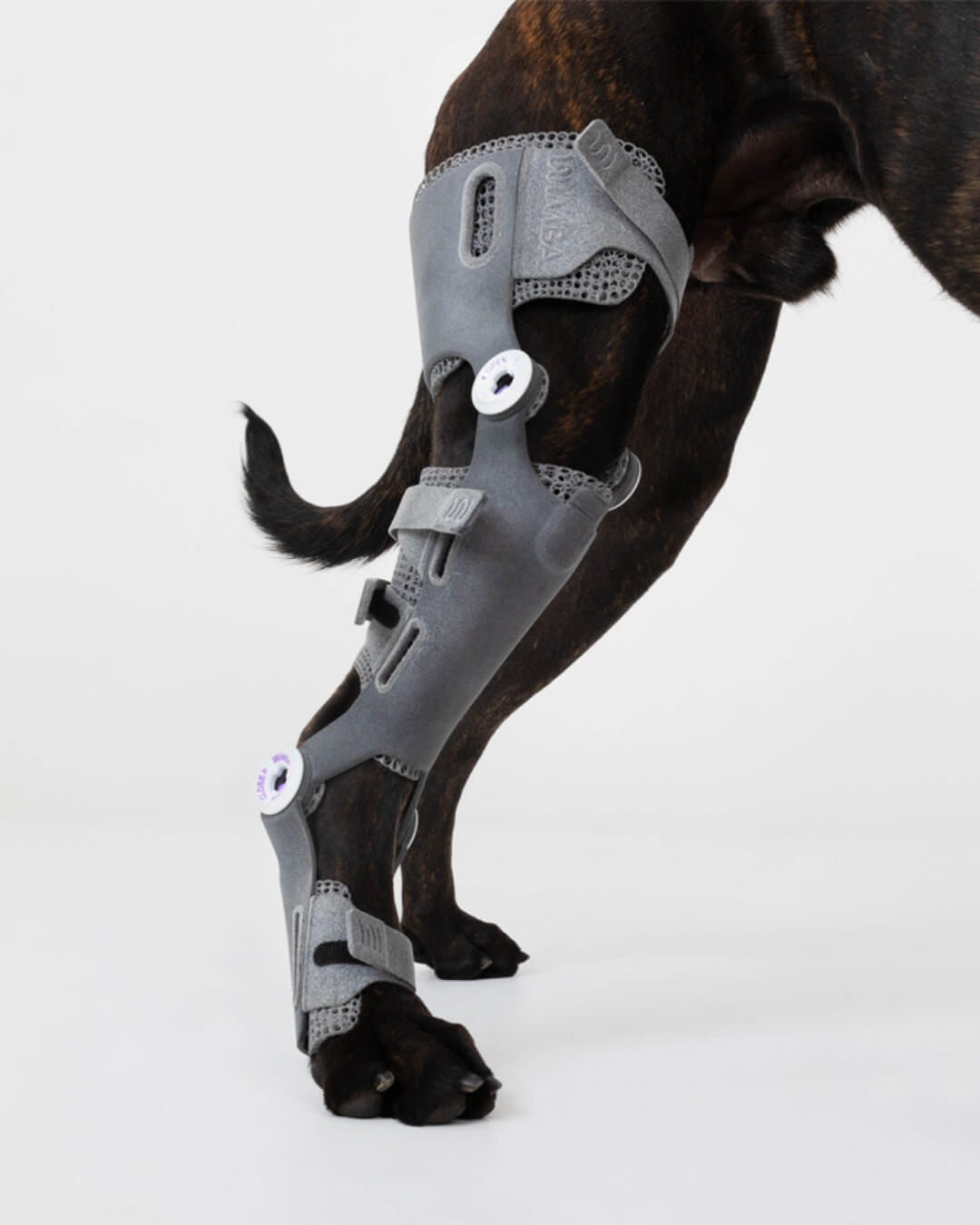
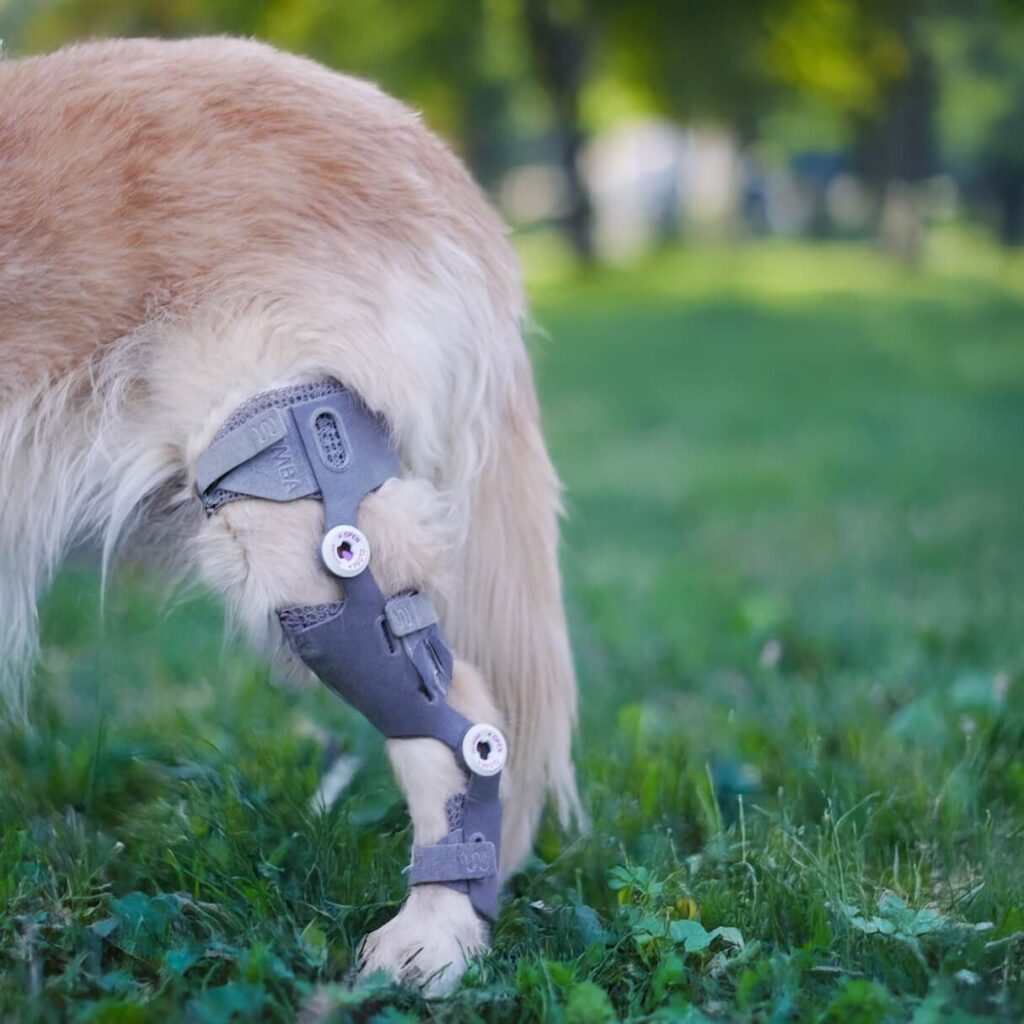
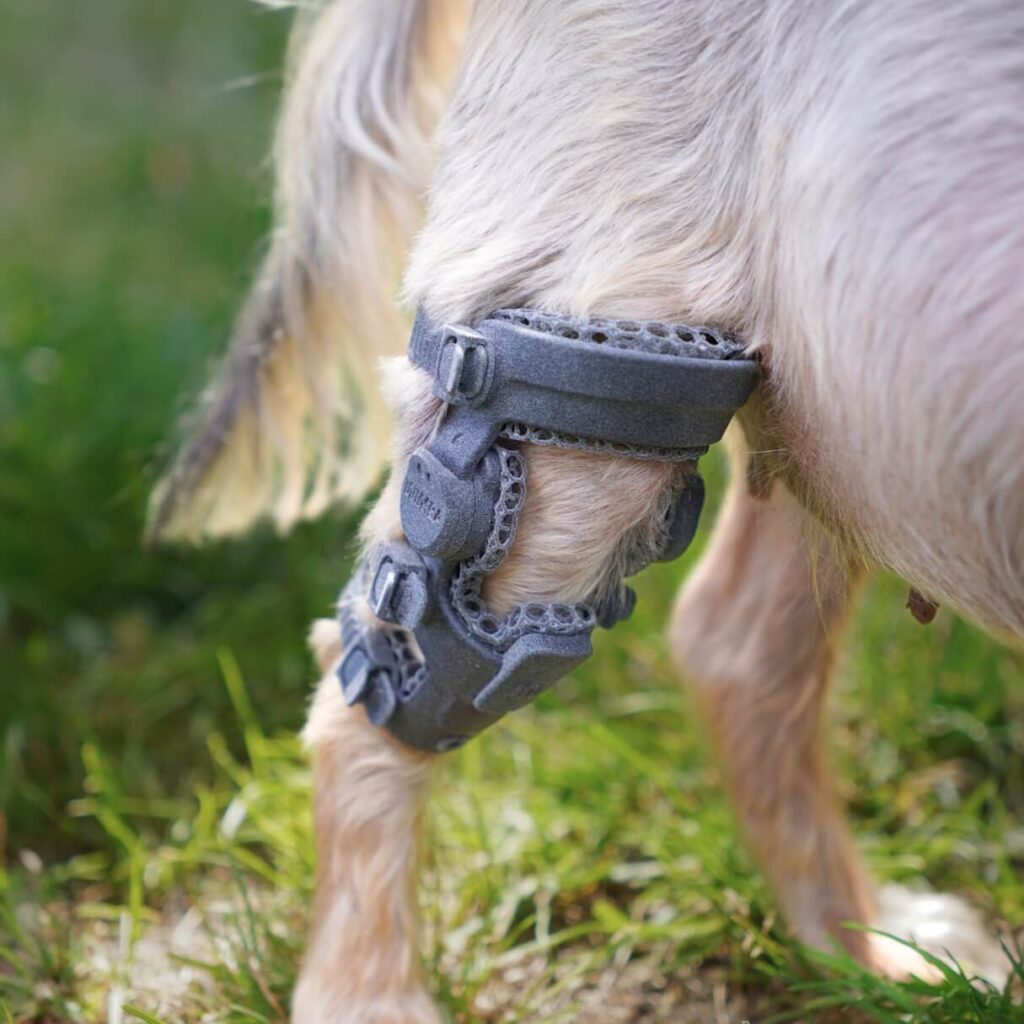
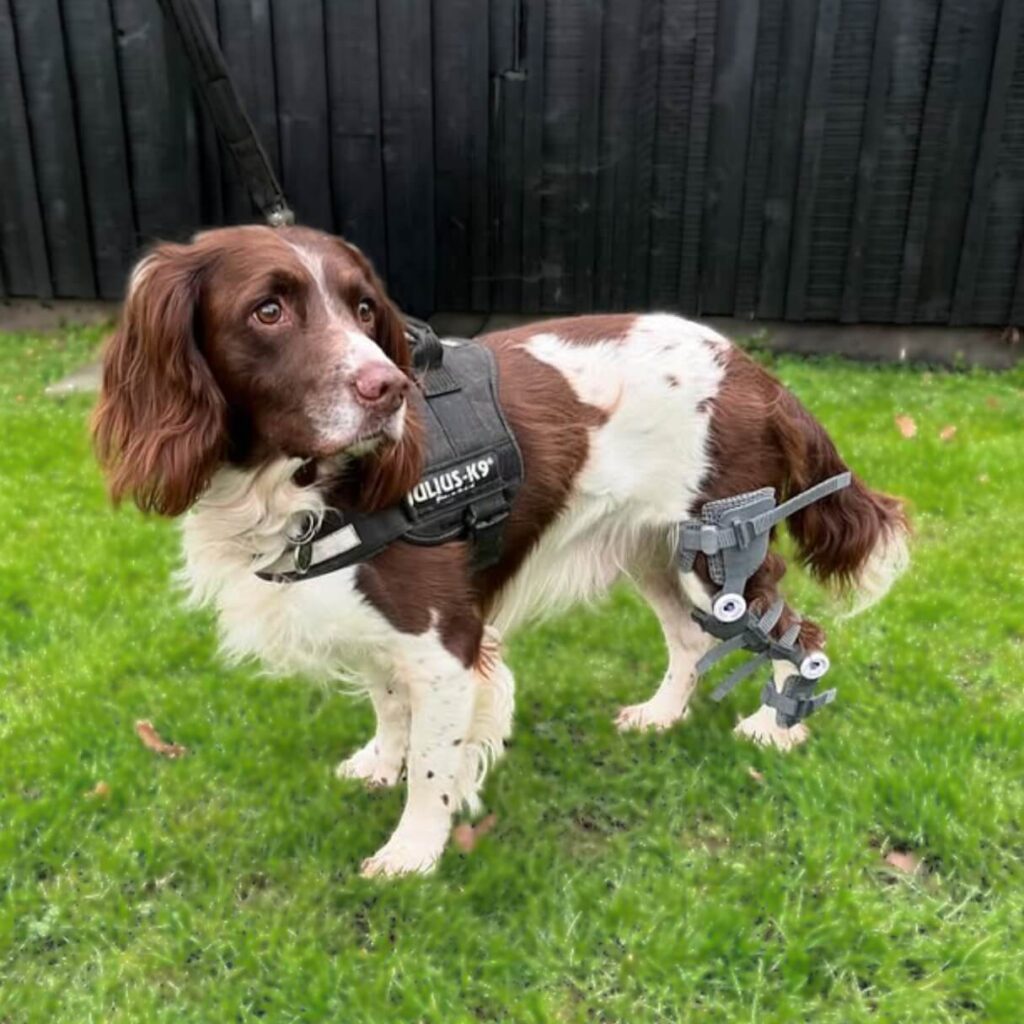
Is it Cranial Cruciate Ligament Injury?
Upload a photo of your pet and your contact info —
we’ll see if your dog or cat may benefit from a custom-fit WIMBA brace.
Understanding Cranial Cruciate Ligament Disease (CCL) in Dogs
Is your dog limping or avoiding play? A torn or weakened cranial cruciate ligament (CCL)—similar to the ACL in humans—might be the cause. Learn what causes CCL injuries, signs to watch for, diagnosis methods, and non-surgical treatment options like WIMBA stifle orthoses.

Written by:
Dr. Emily Hall DVM, CCRT, CPAT-KA
What is the Cranial Cruciate Ligament in Dogs?
The cranial cruciate ligament (CCL) is a strong band of tissue located inside your dog’s knee joint (stifle). It plays a key role in stabilizing the joint during movement, especially when your dog walks, runs, or changes direction.
When this ligament is torn or weakened, the joint becomes unstable, leading to discomfort, difficulty moving, and long-term joint changes if left untreated.
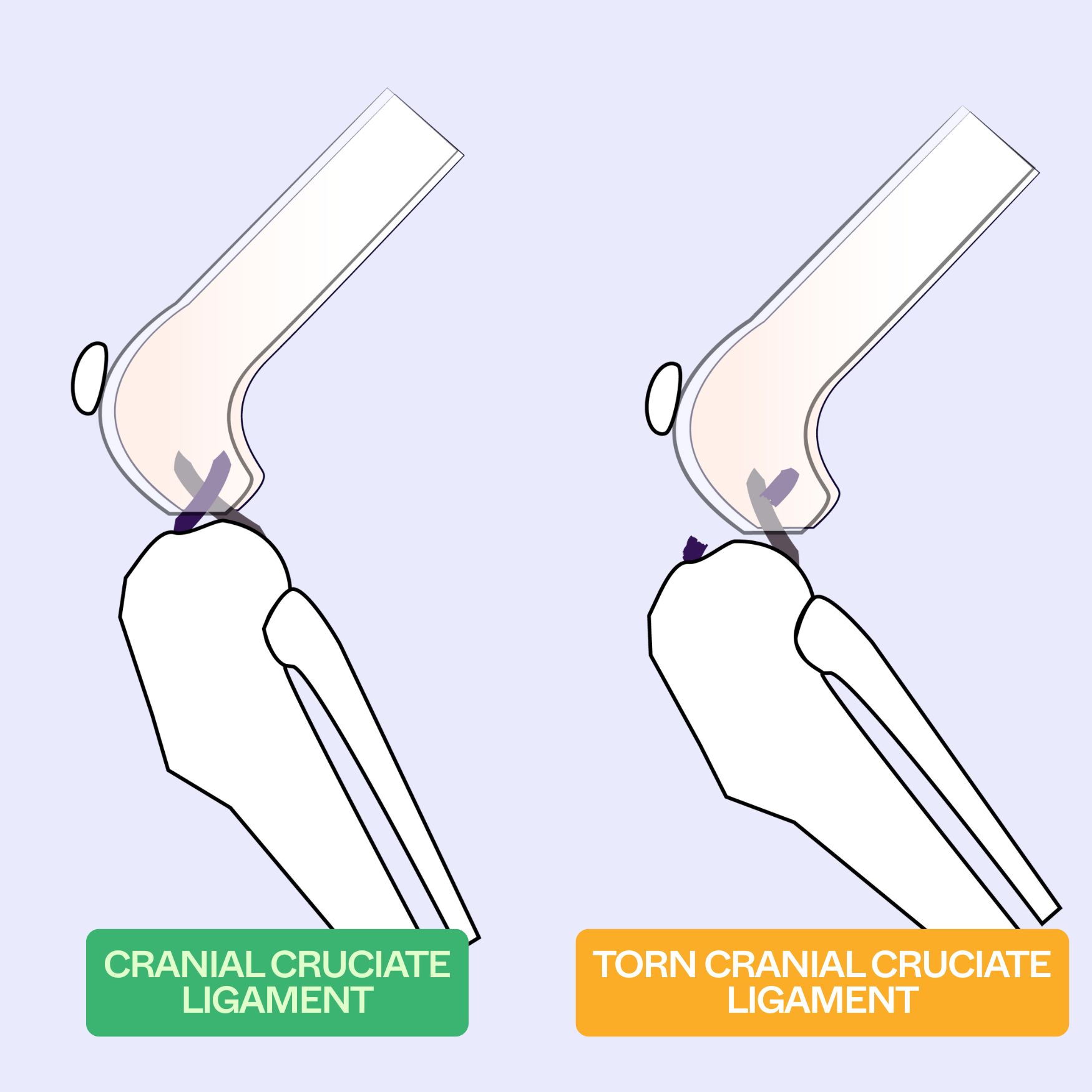
One Step Closer to Mobility
We’ve Helped 1,000+ Pets Walk Again. Is Yours Next?
What Is the Cause of Cruciate Ligament Injury in Dogs?
There’s often more than one contributing factor to a CCL injury. Unlike in humans, where ACL injuries are typically the result of a sudden trauma, in dogs it’s usually a gradual process:
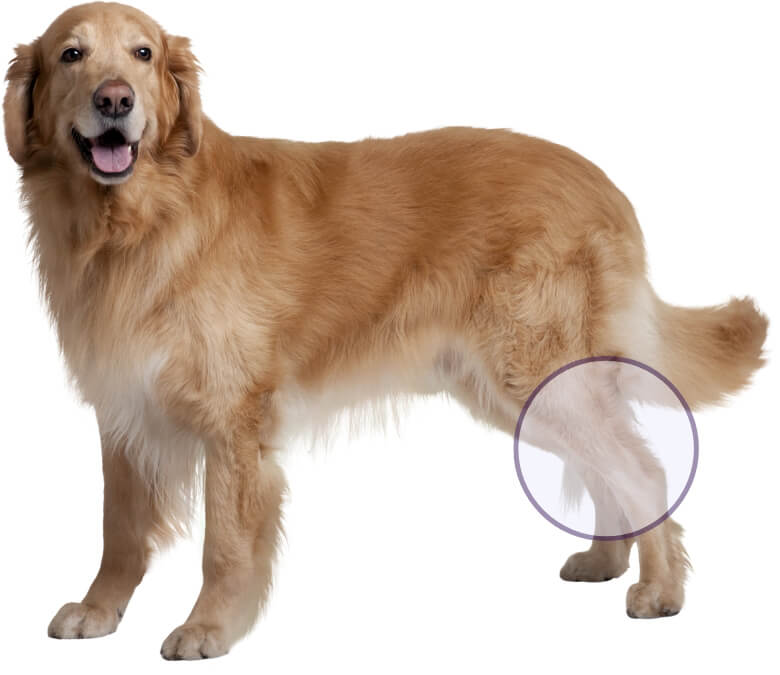
Degenerative Weakening
Over time, the ligament can stretch, weaken, and eventually tear due to long-term wear and tear.
Hormonal and Medical Conditions
Imbalances or chronic inflammatory diseases may contribute to ligament weakening.
Sudden Injury
A quick twist, jump, or turn—especially during play—can push a weakened ligament to its breaking point.
Excess Body Weight
Carrying more weight puts extra strain on the joints and ligaments.
Breed Predisposition
Some breeds are more prone to CCL disease due to their anatomy or joint structure.
Signs and Symptoms of CCL Injuries in Dogs
How do I know if my dog has a CCL tear? Dogs with a CCL injury may show subtle or obvious signs. If you see one or many of these clinical signs, it doesn’t mean your canine companion has for sure torn their cruciate ligament. But it does mean they need to get checked out by a professional. Common symptoms include:
Your dog may suddenly start limping, or you might notice them avoiding putting weight on one back leg.
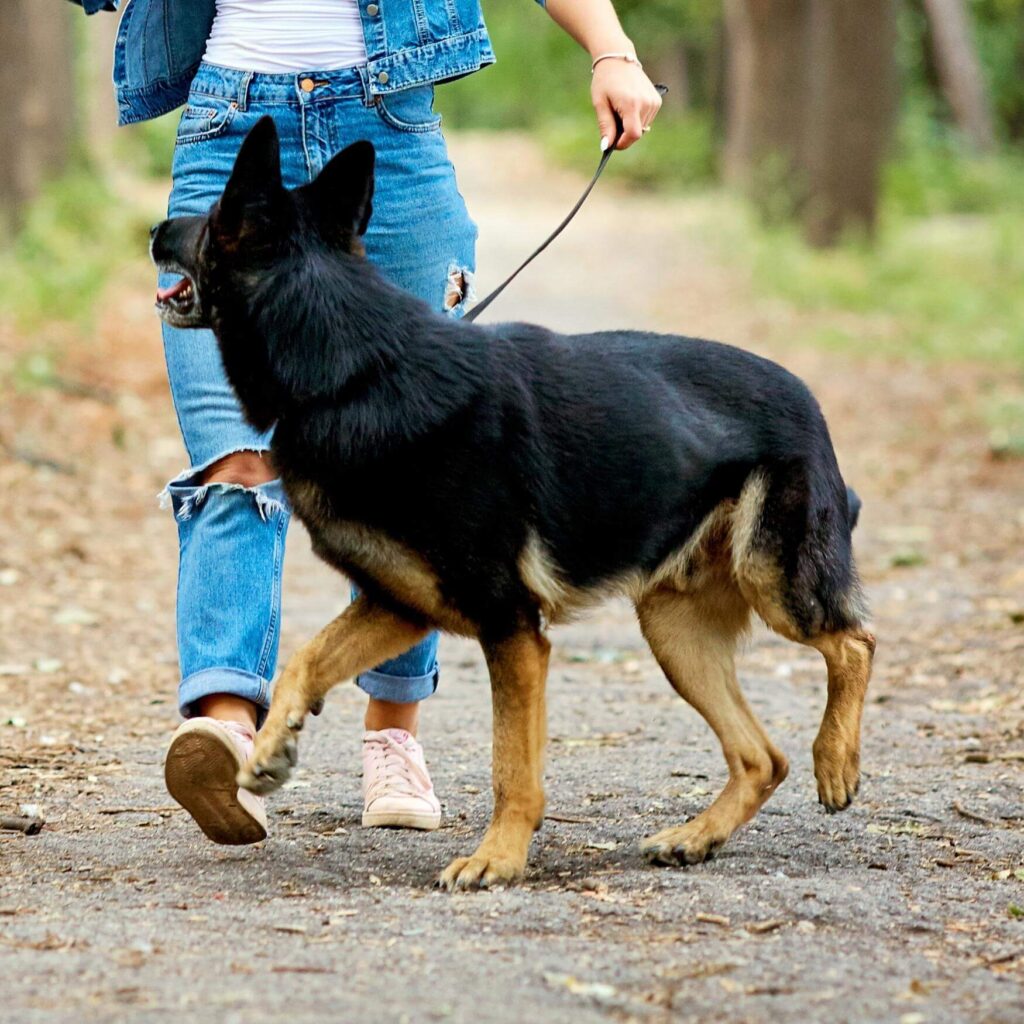
Especially noticeable after rest or in the morning.

In a seated position, your dog may splay the affected limb out to the side in a “sloppy sit” position.
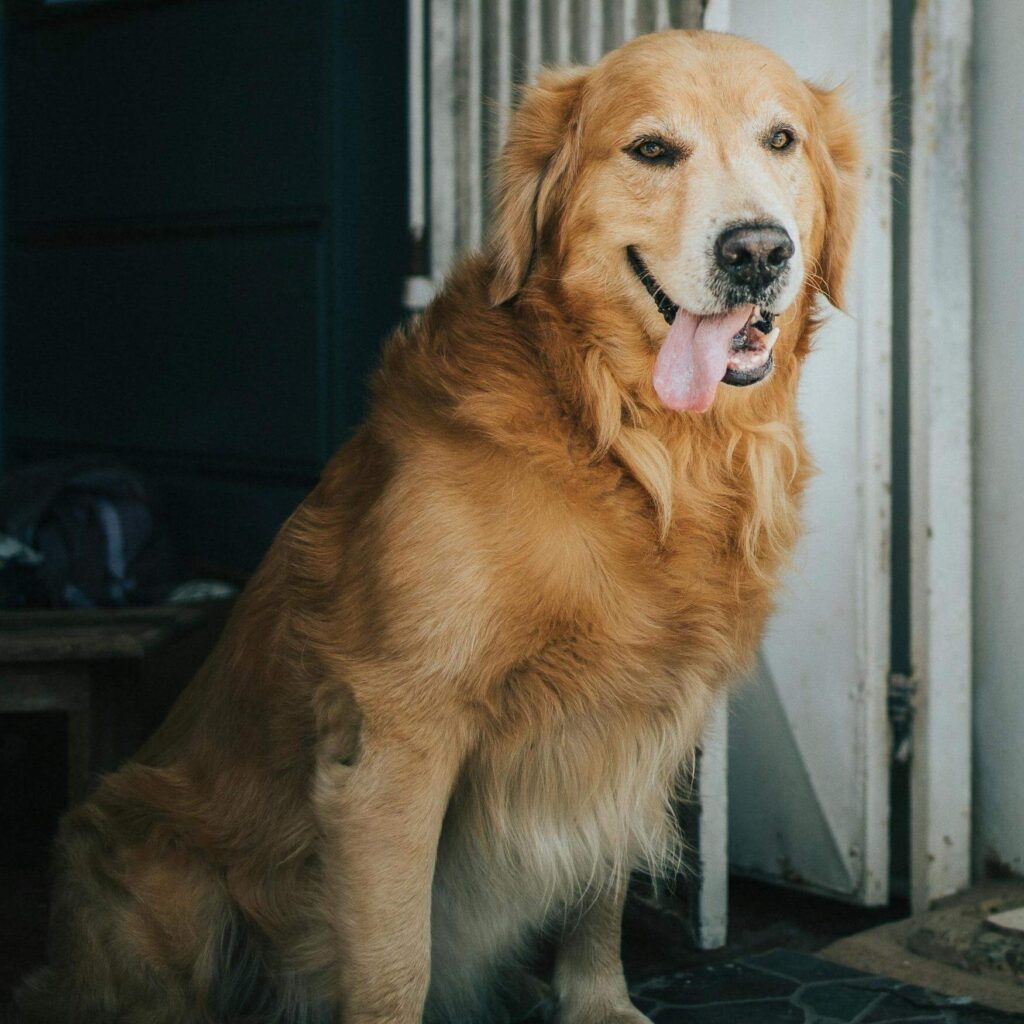
A reluctance to jump, play, or go for walks.

Over time, the large hid limb muscles will shrink (atrophy).

FOR PET OWNERS
Help Your Dog Walk Comfortably Again
Concerned about your dog’s knee pain or limping?
Need a brace for your pet?
Find a WIMBA Provider near you to order the device.
How is a CCL Injury Diagnosed in Dogs?
Your animal professional will start with a thorough physical examination, looking for signs of instability and pain in the knee joint. They may perform specific movement tests to assess how the tibia (shin bone) moves relative to the femur (thigh bone).
To get a full picture, the following diagnostic tools may be used:
While the ligament itself isn’t visible, radiographs can reveal signs of joint inflammation, arthritis, or fluid buildup.

These are special radiographs taken while gently manipulating the joint to reveal abnormal movement.
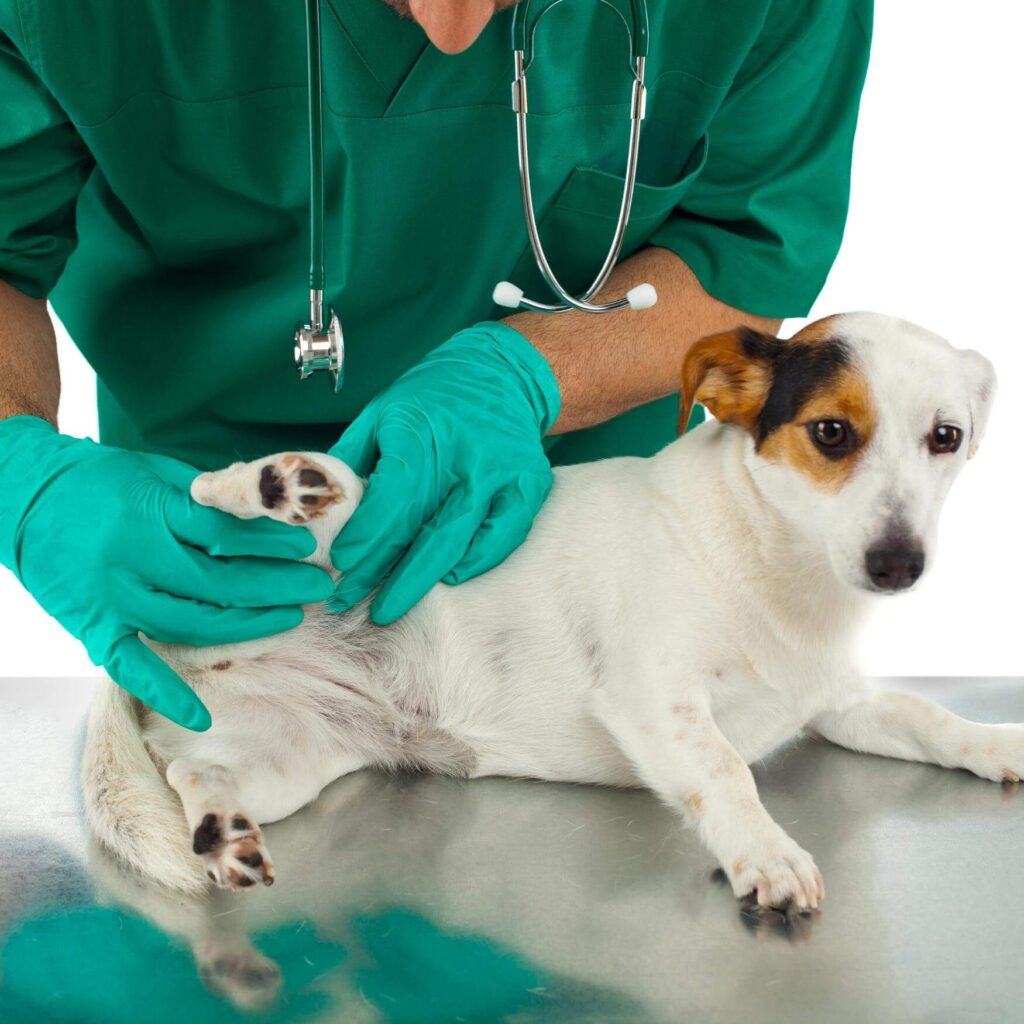
These scans can help confirm the diagnosis and assess the extent of ligament damage.

In some cases, a small camera may be used inside the joint for direct evaluation.
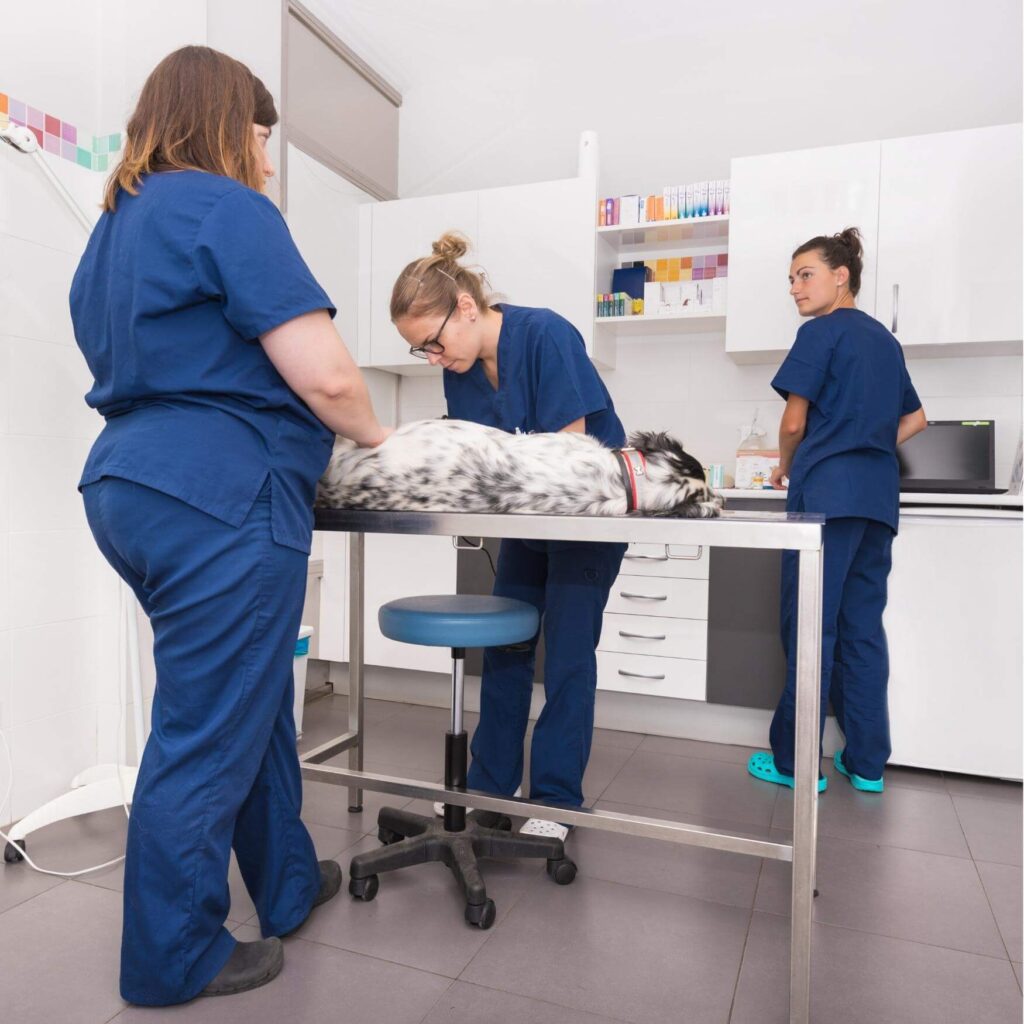
Treatment Options for Cranial Cruciate Ligament Injury
The best treatment will depend on your canine companion’s size, lifestyle, and the severity of the injury.
Conservative (Non-Surgical) Management:
In mild cases or for dogs with limited mobility, non-surgical treatment may include:

Strict rest and activity restriction

Canine rehabilitation therapy

Joint support with custom orthotics

Anti-inflammatory medications
While conservative care may help manage symptoms, it may not fully restore stability in larger, more complicated conditions, or more active dogs.
Surgical Management for Cranial Cruciate Ligament Injury
Surgery is generally the most effective way to restore joint stability and minimize long-term damage.
Your veterinary surgeon will recommend the best option based on your dog’s individual needs.
Rehabilitation After Treatment
Recovery doesn’t stop at surgery or medication. A tailored rehabilitation plan helps dogs regain strength and mobility:

Your pet’s comfort matters.
Support their knee joints with tailored WIMBA orthotics.
Breeds Commonly Affected by Cruciate Ligament Injury

While any dog can injure their CCL, certain breeds are more commonly affected:
Large breeds and dogs with a sloped knee angle or straight-legged posture tend to be at higher risk.
Prevention of Cruciate Ligament Injuries in Dogs
While not all cases can be prevented, you can help reduce your dog’s risk by:

Keeping your dog active but avoiding sudden or high-impact movements

Feeding a well-balanced diet to maintain a healthy body condition

Strengthening muscles through regular, low-impact exercise or a guided professional conditioning program for active dogs

Scheduling regular vet checkups to detect early joint or mobility issues
Is an Operation Always Necessary?
Not necessarily. While surgery is often recommended for complete ligament tears—especially in larger or athletic dogs—some dogs may respond well to non-surgical treatment. A veterinary orthopedic consultation will help determine the best path forward for your dog’s specific needs.
Next Condition
PET STORIES
WIMBA Orthosis in Action:
WIMBA Orthosis in Action: Real CCL Recovery Cases
Cruciate Ligament Rupture
Jack
Diagnosed with immune-mediated thrombocytopenia (ITP), an autoimmune disease, surgery was simply too risky for Jack. So when he ruptured his CCL, conservative management became the only option. With the support of his dedicated vet and rehabilitation team – and a custom WIMBA Stifle Brace – Jack has regained stability, confidence, and improved weight-bearing throughout his recovery.
“Since fitting Jack has increased his walks, he has improved weight bearing and in time will gain more hamstring muscle mass. We’ve got a journey to go yet but safe to say Jack is ending the year on a positive note.”
Vault Physiotherapy
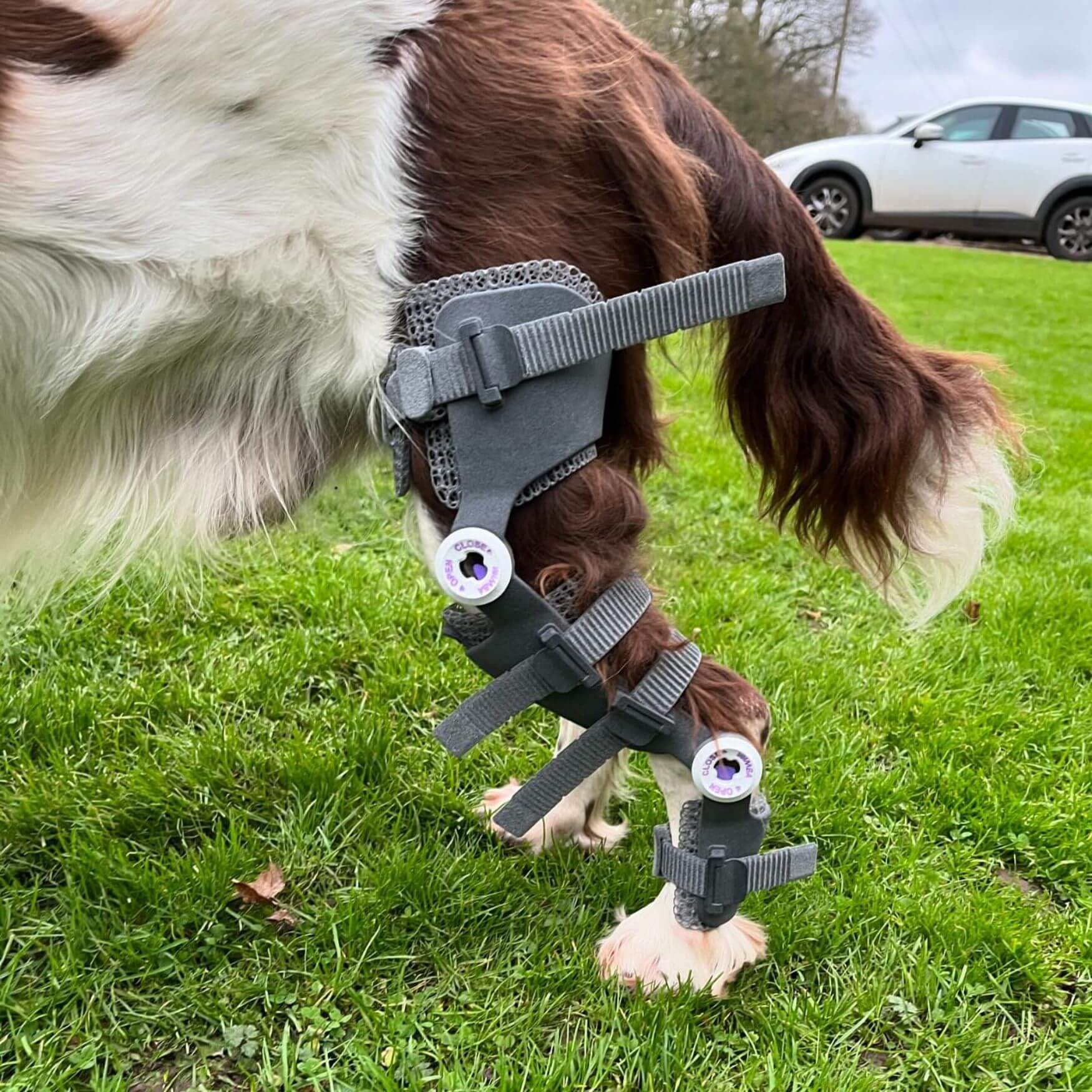
ACL Rupture/CrCCL
Frankie
Frankie struggles with a complex and chronic progression of stifle joint pathology. Initially diagnosed with Osteochondritis Dissecans (OCD) of the stifle, Frankie underwent surgical intervention. The introduction of the WIMBA stifle orthosis resulted in immediate and noticeable improvements in Frankie’s mobility.
“Frankie was referred for physiotherapy following multiple stifle surgeries. The referral surgeon commented that his stifle was an end stage diseased joint, his synovium had been resected because it was necrotic and the cranial and caudal cruciate ligaments were no longer present.
Frankie has a very unstable stifle, cranial tibial thrust visible under load at walk, alongside internal rotation of the tibia and hyperextension of the stifle.
He has been through so much in his life and our main objectives for Frankie were for him to live his best life every day, be able to go and walk in the fields and walk with his best friend Freddi.
Once his WIMBA stifle brace was fitted, it allowed him the freedom of being off lead with his friend. Frankie is now living his best life with the help of his Wimba stifle brace.” –
Nichi Cockburn RVN NCert (A&CC) CCRP AdvCertVPhys MIRVAP (VP)
Veterinary Physiotherapist & Rehabilitation Service Lead
VetPartners Practices Limited T/A Valley Vets
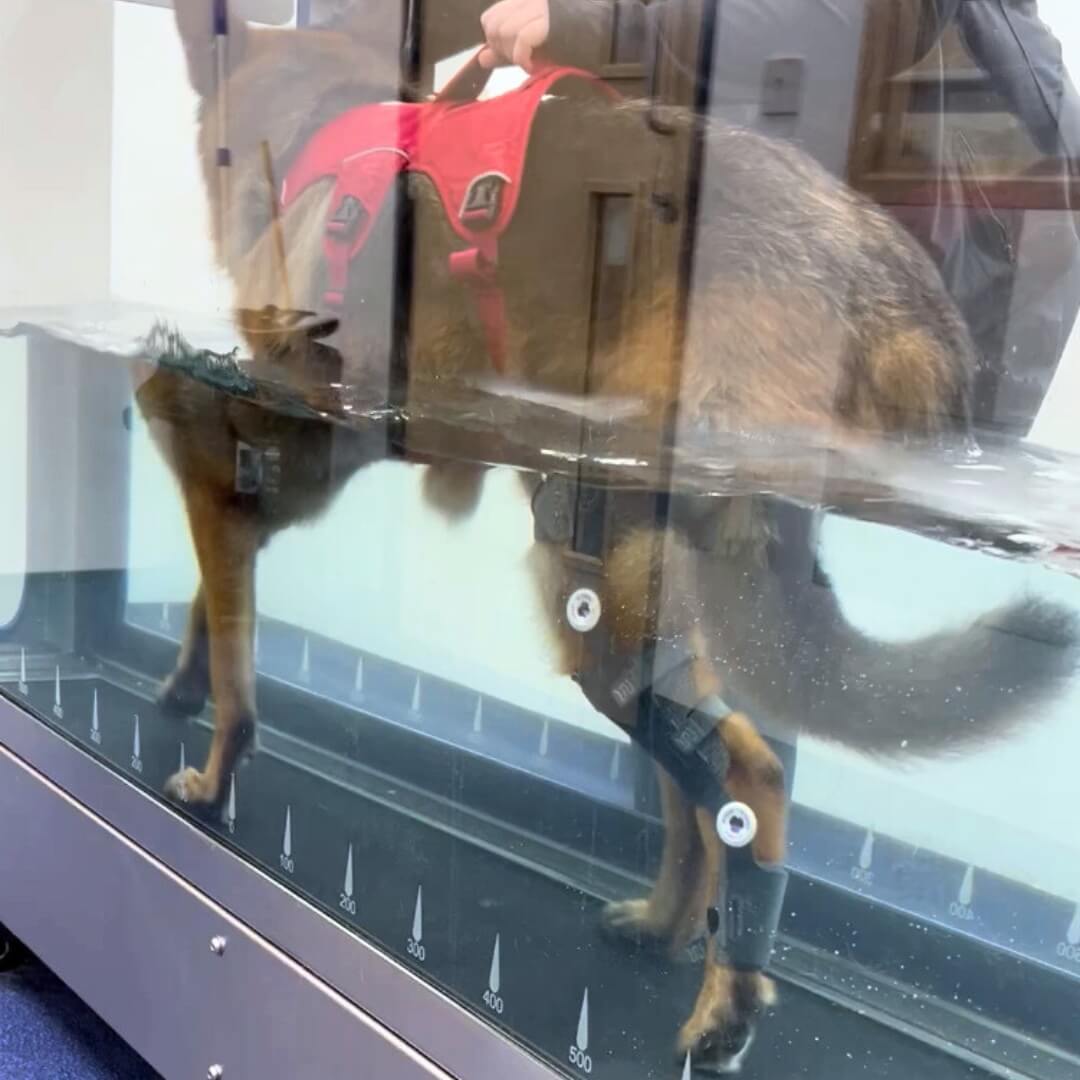
Worried about your pet’s knee?
Explore WIMBA orthotics to support your dog’s mobility
Cranial Cruciate Ligament Rupture
Simba
Simba, a 31 kg dog, was diagnosed with cranial cruciate ligament rupture. With the support of the WIMBA Stifle Brace, Simba’s mobility is improving. See how the WIMBA Stifle Brace adds stability to Simba’s stifle joint.
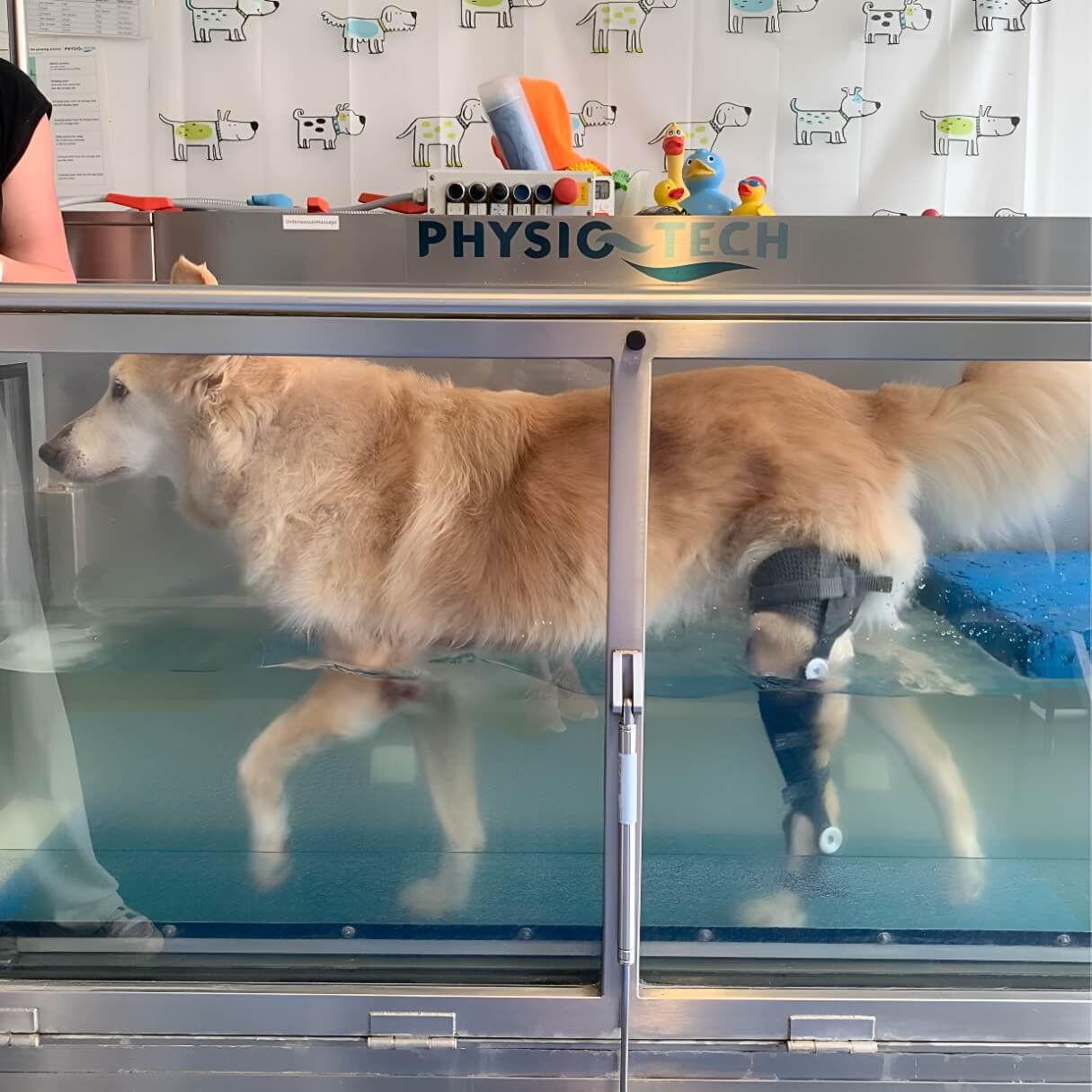
Partial Cruciate Ligament Tear
Tess
This amazing German Shepherd, Tess, has been struggling with a partial cruciate ligament tear, which has caused her significant pain and limited her ability to move freely. She received her own WIMBA Stifle Brace, and the results have been truly impressive. Tess adapted to the brace very quickly and is now walking much better. According to her pet parent, she’s moving at a much faster pace and is able to walk comfortably right from the start.
“Bernie can now enjoy longer walks and play with other dogs without us constantly worrying about pain or having to plan ahead to give her medication. She can finally just be a puppy again, doing what she loves without any repercussions or days of rest afterward. The entire process was easy, and now that Bernie has the brace, it’s truly changed her life.”
Owner of Bernie


Follow WIMBA on Social Media
Follow WIMBA for more pet mobility tips & success stories!
This blog post is for informational purposes only and should not replace professional veterinary advice. Always consult your veterinarian for an accurate diagnosis and tailored treatment plans for your pet.